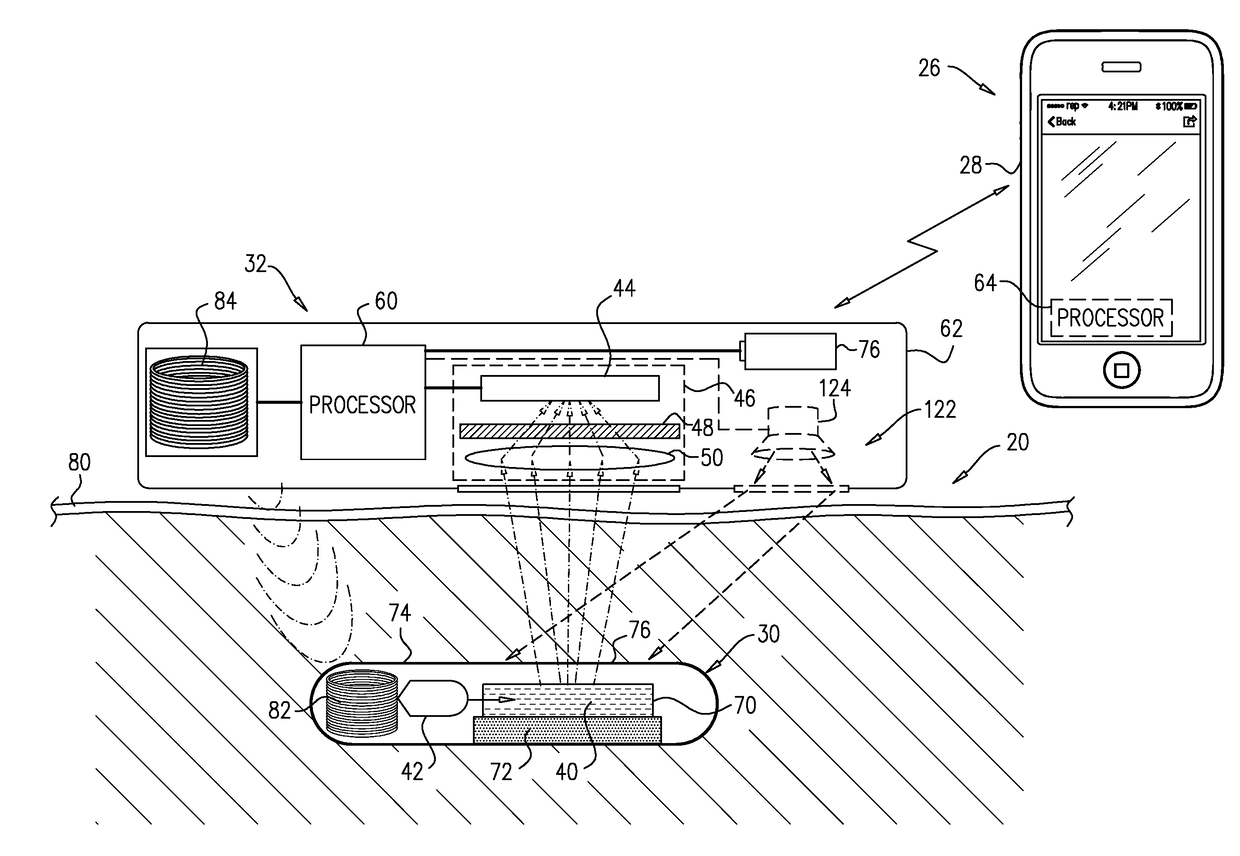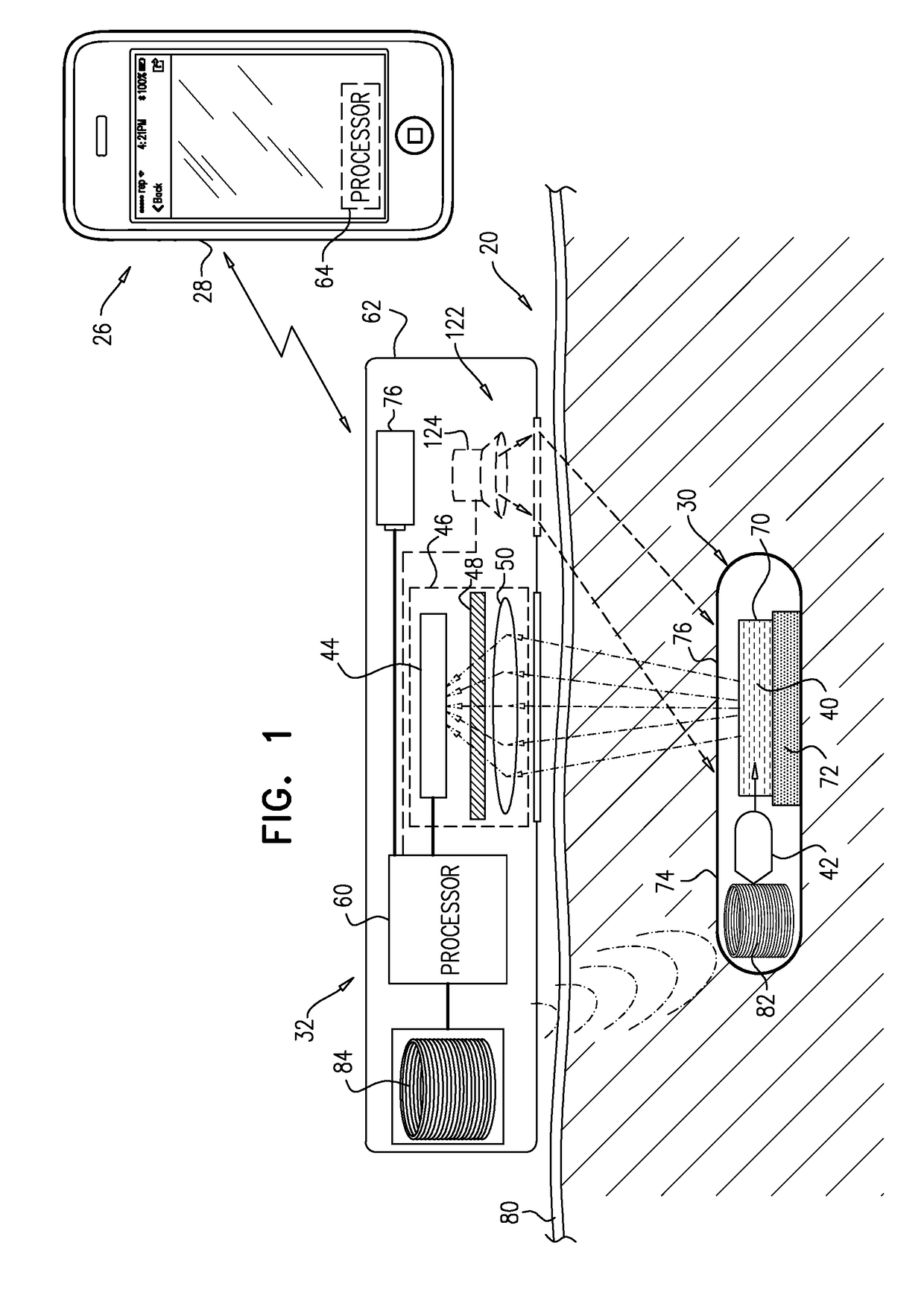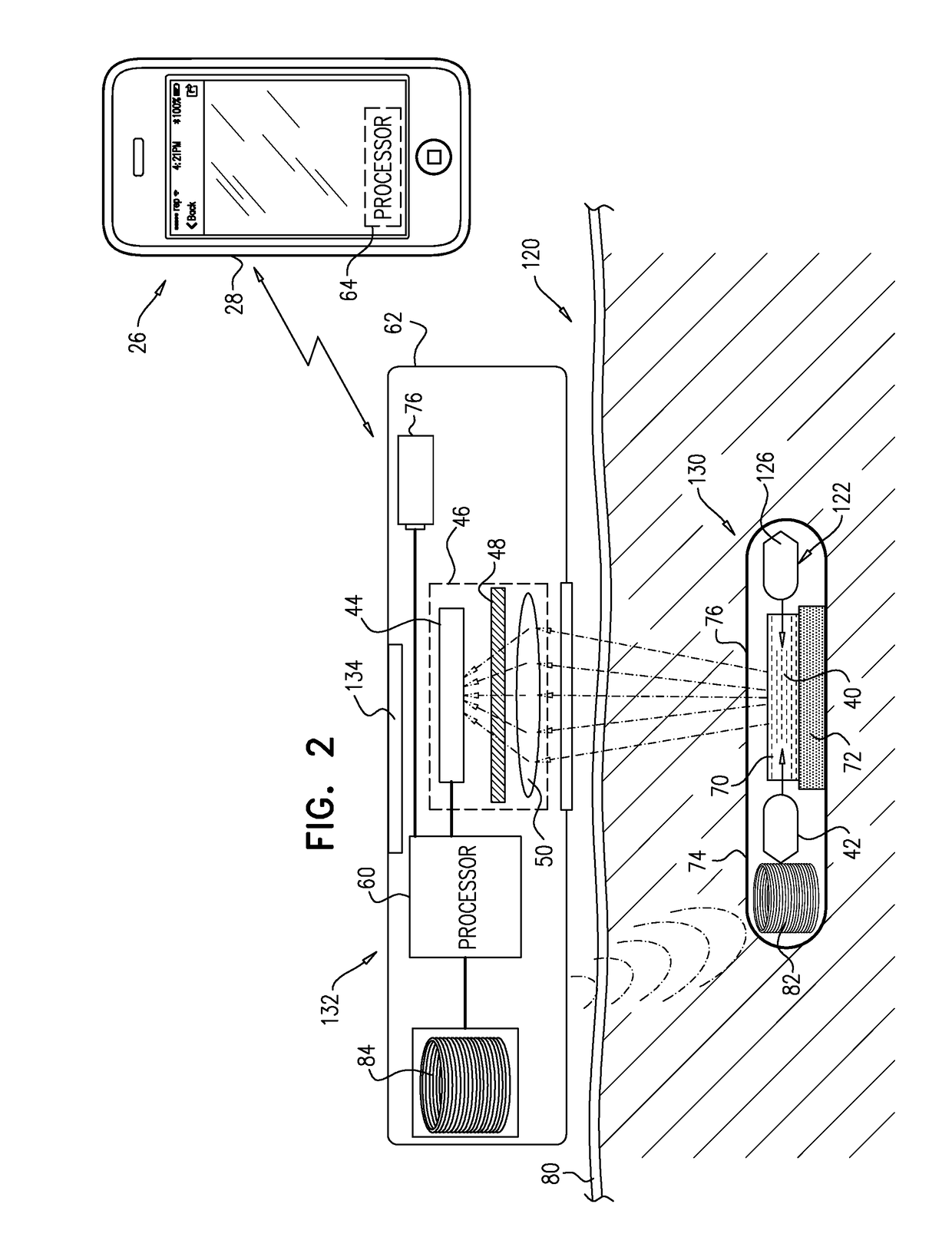Analyte-sensing device
an analyte and sensor technology, applied in the field of implantable sensors, can solve the problems of compromising measurement accuracy, low signal-to-background and signal-to-noise ratio, and difficult transdermal measurement of optical signals, so as to improve tissue penetration, eliminate crosstalk, and improve the effect of penetration
- Summary
- Abstract
- Description
- Claims
- Application Information
AI Technical Summary
Benefits of technology
Problems solved by technology
Method used
Image
Examples
Embodiment Construction
[0304]FIG. 1 is a schematic illustration of a system 20 for transdermal detection of a concentration of an analyte in a subject, in accordance with an application of the present invention. System 20 comprises an implantable unit 30, which is configured to be implanted in a body of the subject, and an external system 26, which is physically separate and distinct from implantable unit 30. External system 26 comprises an external reading unit 32 and, optionally, an external monitor unit 28.
[0305]Implantable unit 30 comprises fluorescent sensor molecules 40, each of which comprises a binding site for the analyte, and at least one fluorescent moiety. A number of fluorescent compounds have been described in the literature for the purpose of analyte sensing, including different fluorescent reporters, e.g., Concanavalin-A, fluorescein, and fluorophores derived from various marine fauna, such as GFP and its derivatives. The analyte sensing is based on different mechanisms, including, e.g., s...
PUM
 Login to View More
Login to View More Abstract
Description
Claims
Application Information
 Login to View More
Login to View More - R&D
- Intellectual Property
- Life Sciences
- Materials
- Tech Scout
- Unparalleled Data Quality
- Higher Quality Content
- 60% Fewer Hallucinations
Browse by: Latest US Patents, China's latest patents, Technical Efficacy Thesaurus, Application Domain, Technology Topic, Popular Technical Reports.
© 2025 PatSnap. All rights reserved.Legal|Privacy policy|Modern Slavery Act Transparency Statement|Sitemap|About US| Contact US: help@patsnap.com



